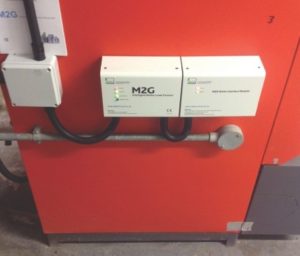 Why are retrofit boiler controls proving so popular, asks boiler control firm Sabien in this sponsored post.
Why are retrofit boiler controls proving so popular, asks boiler control firm Sabien in this sponsored post.Retrofit boiler controls are now making a significant contribution to energy and carbon reduction strategies? There are several reasons for this.
Many organisations have already reduced energy wastage, especially electricity, and are now turning to gas and oil. Obvious measures include ensuring there are controls in place, the control strategy is aligned to current building usage and plant is regularly maintained.
Once these measures have been taken, retrofitted boiler optimisation controls are increasingly used to reduce energy consumption further and are often recommended in energy performance contracts.
This is because retrofit boiler controls require relatively low investment, deliver proven savings, are simple to deploy and deliver significant and quick financial returns.
Why not use the BMS?
Typically a BMS is configured to control the heating system as a whole rather than monitoring and controlling each individual boiler – making it impossible to identify dry cycling at individual boiler level.
Other factors include:
Re-programming a BMS can be expensive when hardware, programming, commissioning and ongoing maintenance costs are taken into account.
A multi-site estate may have several BMS and boiler types, each requiring its own re-programming procedure.
Retrofit controls such as M2G can be easily deployed estate-wide regardless of the age, size and type of boiler
The rapid uptake of boiler load controls therefore brings an additional level of control. Sabien’s M2G only addresses boiler dry cycling, it does not replicate or duplicate the BMS functions. This is why organisations such as BT, O2, Aviva and the MoD have all invested in this technology – as well as investing in modern BMS controls and boilers.
More than 9,500 Sabien M2G boiler controls have been installed worldwide, delivering cost-savings of 10-25% with typical paybacks of less than two years, and as they are self-learning there is no requirement for ongoing maintenance or commissioning.
How do boiler controls work?
Unlike many other attempts to control boiler dry cycling, M2G does not use a time delay, lower the boiler’s operating temperature, conflict with existing control strategies or compromise comfort conditions. Instead, it provides real time analysis of each boiler’s heat loss and recalculates the values every time the boiler reaches its required set point temperature. This means it adapts to BMS/optimiser variable set-points and, crucially, the boilers’ designed set points are never altered.
Verification
Measurement and verification is important in any energy-saving initiative. Sabien recommends that savings are verified in line with the International Performance Measurement and Verification Protocol (IPMVP). This provides full transparency and ensures savings analysis is based on actual kWh rather than boiler runtime savings
Conclusion
As organisations search for further savings within their estates, boiler load optimisation should be one of the first technologies considered and deployed to deliver this. However, energy managers must ensure their BMS supplier and the boiler control supplier engage effectively so that a full understanding of the technology and the demarcation between the control strategies is understood by all.
Click here to see if you qualify for a free subscription to the print magazine, or to renew.
Follow us at @EnergystMedia. For regular bulletins, sign up for the free newsletter.



